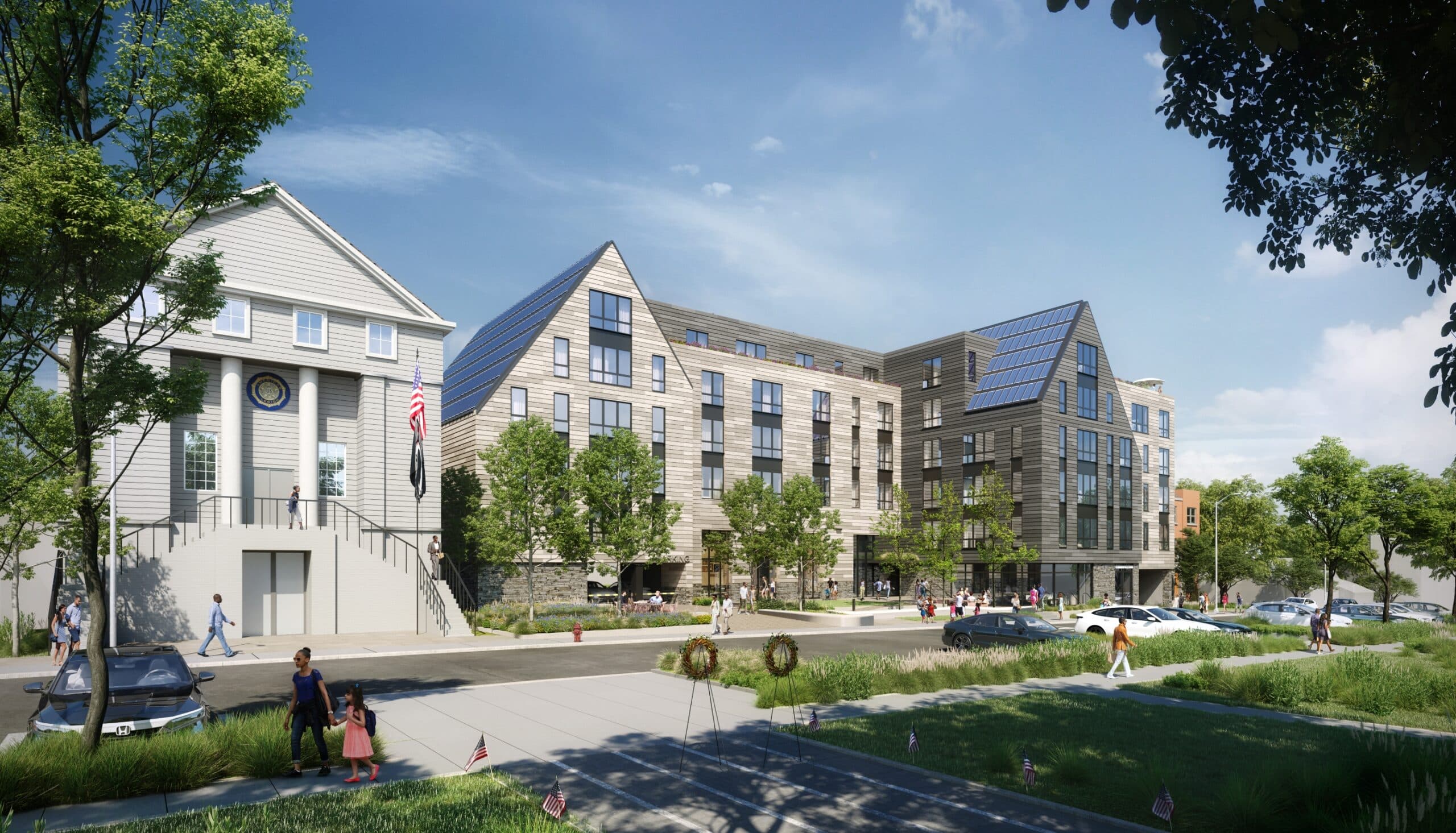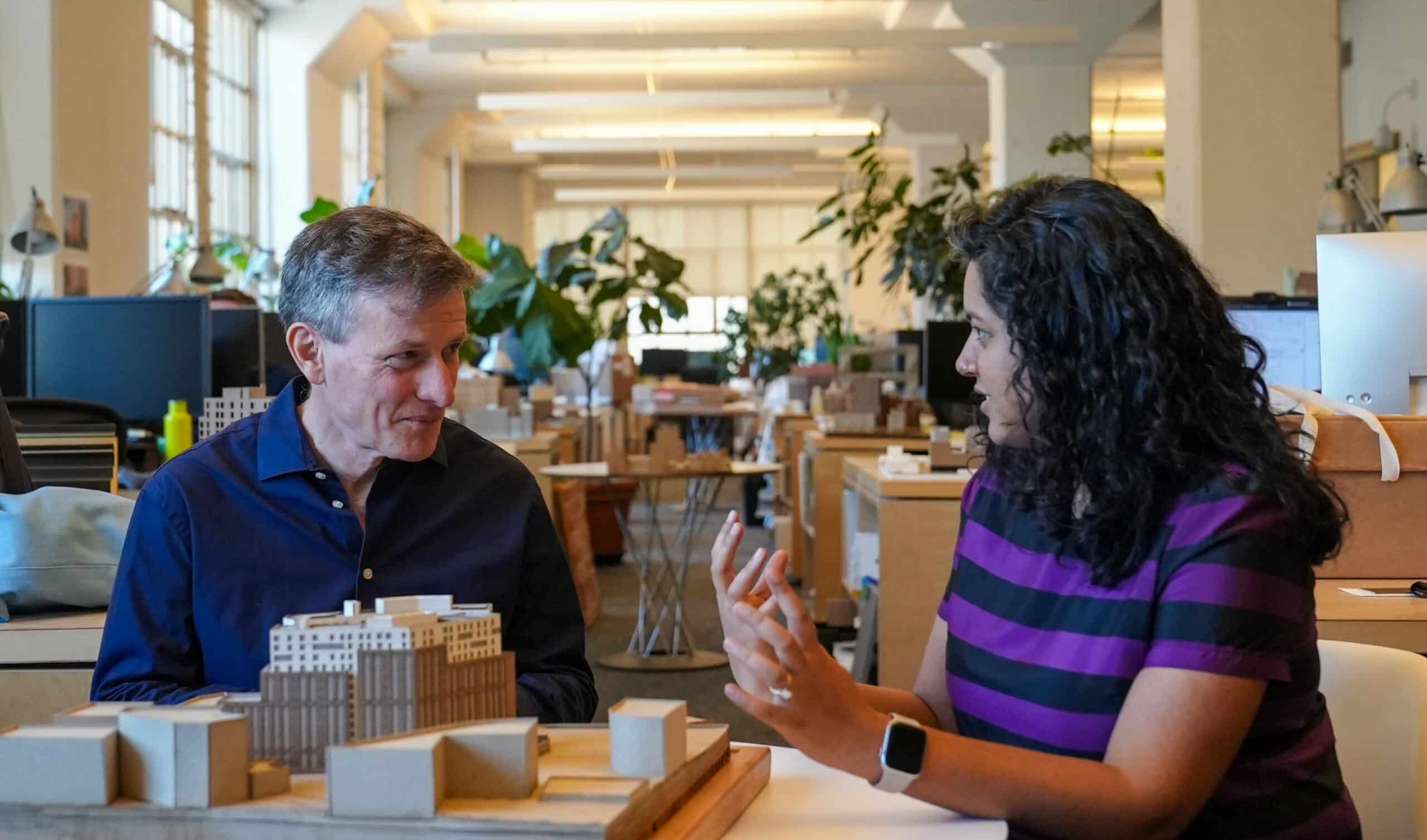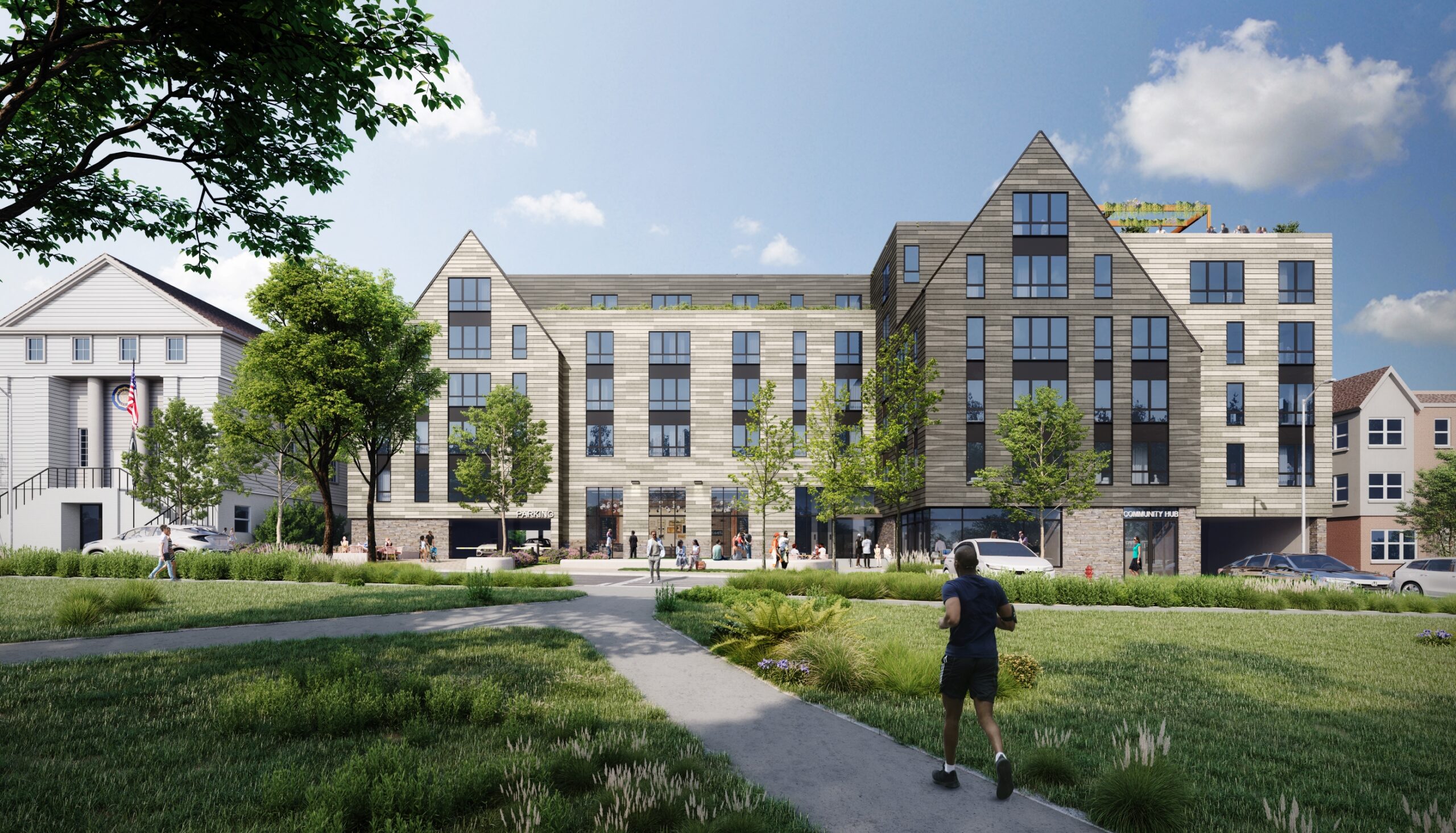
Affordable Housing: A Conversation on Small Town Economic Growth
Affordable Housing: A Conversation on Small Town Economic Growth
In a thought-provoking dialogue with Guido Hartray, Architect and founding partner at Marvel, and Ishita Gaur, Urban Designer and Planner and Associate, we explore the correlations between urban development and community aspirations. The possibility which emerges from the discussion is that affordable housing not only serves a community need, but it can also benefit the economy and workings of a smaller town.
Guido provides insights drawn from a recent Request for Proposal (RFP) process, where public debates peel back the layers of opinion and expose the priorities and concerns of village residents. Throughout the conversation, Ishita provides depth by examining the sustainability and resilience aspects of the discourse. Together, they navigate the delicate balance between seemingly opposing priorities, revealing the potential for affordable housing and economic development to synergize, fostering a vibrant and thriving community.
The following conversation has been edited for length and comprehension:
Guido: In a recent public RFP process, the dynamics of the village debate forced our team and local residents to consider and advocate for local priorities. The public debate in the village differs from the typical confidential RFP process, it allows an open dialog to form about priorities. The village board’s questions and comments prompted our consideration of town balance, economic development goals, and the overarching project aim of providing housing and parking in the downtown area.
It became clear that these aspects need not be conflicting priorities but could complement each other. Affordable housing’s labor pool could sustain local economic development, and higher housing density in the village core could provide consistent customers for local businesses. The village of Mamaroneck, which sponsored the RFP, shares much in common with other small cities and villages with where a vibrant downtown requires affordable housing to maintain long-term sustainability amid rising housing costs.

Guido: In the case of an RFP process for Mamaroneck, it began with a public site, emphasizing the opportunity to contribute quantitatively through housing and qualitatively through infrastructure and public spaces.
The existing parking lot on the site, while serving a need, does not enhance the experience of the village center’. Integrating housing with parking underneath offers a solution that contributes to the public realm, enhancing the town’s identity.
For smaller cities and towns, the need for affordable housing can be initiated either by the city or developers. How do you see the decision-making process unfold, and what factors influence whether it’s a top-down approach from the city or a bottom-up initiative from the community?
Ishita: Cities in the U.S. typically revisit their comprehensive plans, assessing progress and making necessary adjustments. This top-down approach aligns with the city or village’s vision, often outlined in a long-term plan. However, bottom-up initiatives, driven by community opinions or triggered by population shifts, can also influence the need for affordable housing. The decision-making process tends to be city or village-driven, guided by what is permitted and feasible within their plans.
Guido: And there’s often a clash of priorities. Local municipalities have historically viewed affordable family housing as a potential burden, anticipating the need for more schools and teachers. However, in towns with diverse constituencies, the realization is growing that accommodating teachers and essential workers within the town is crucial for sustainability. Statewide initiatives often mandate towns to develop balanced plans for accountable development. Some towns and nonprofits see this as an opportunity rather than a challenge, envisioning the positive contributions to their communities.

Ishita: Increasing housing affordability can often come with tax incentives from federal, city, or state funding. These include an emphasis on public transit to unify towns and cities, leading to projects that promote walkability, downtown vibrancy, and affordable housing expansion.
Guido: Affordable housing projects encompass a mix of incomes, addressing concerns about potential burdens on the community. The resistance sometimes stems from misconceptions about the income levels involved. Affordable housing can cater to a range, from 25% to 100% of the median income, encompassing teachers, public employees, and retail clerks. Creating opportunities for essential workers to live in the community where they work not only strengthens the community but also builds a more robust economic base.
Ishita: Exactly – Because people who live and work at the same place, also all spend and buy in the same place.
From an urban design perspective, the concept of 15-minute cities is gaining traction. It’s about accessibility within a 15-minute walking radius – can your kid walk to school, or can you reach a hospital in that time? This encompasses senior care, access to a grocery store, public school, and cultural institutions like community facilities or theaters. These elements contribute to creating diverse communities in terms of both generations and expertise.

Guido: Some towns face a situation where homeowners, who once bought a house for a family, find it a burden as their kids move away. These houses could be valuable assets for new families. However, lack of suitable options often traps these homeowners. Providing opportunities for them to move into the town center, where they can become the bedrock of the community, is essential. This shift allows them to continue to contribute to their community. Retirees can be the backbone of a community as volunteers but may need relief from the burden of home maintenance. Not creating housing which suits them is a loss to the community.
Introducing smaller-scale housing, like apartments, frees individuals from tasks such as plowing driveways and unclogging gutters. This not only suits their changing lifestyle but also aligns housing with current needs.
Ishita: From a sustainability perspective, this shift to multi-family housing is also better for the environment, especially in the context of the current climate crisis. Embracing density in housing reduces resource consumption and fosters a more environmentally conscious community.
Density becomes crucial for sustainability, leveraging the power of numbers. Multi-family housing of different scales has lesser resource demands and makes residents more aware of their environmental impact. This shift towards density is seen as the future, aligning with the need for more sustainable living practices.
Guido: Many town centers face challenges due to a lack of diverse housing types. While developers may build larger apartment complexes on the periphery, residents often need cars to get anywhere. This disperses economic benefits to the town, as people may choose shopping centers or strips over the town center. Housing cost and lack of diverse housing types pushes out critical generations that can only find housing in suburban developments undermining a vibrant downtown experience. Creating a downtown with mixed-income housing can incentivize economic vibrancy, attracting regular clientele for businesses and fostering a livelier atmosphere.
Ishita: Certainly, like our Elm Street study working with the city of Nashua New Hampshire, where a former school, is being repurposed for affordable housing. Smaller towns often have parking lots around their centers that don’t contribute to vitality. While renovating existing buildings is sustainable, building new infill in these parking areas can enhance sustainability and energy performance. Both approaches offer opportunities worth exploring.

Guido: Resilient communities, in particular, thrive on social networks rather than just physical infrastructure. Strong connections among people, formed through in-person interactions, are vital for resilience. Gathering around a town green or meeting during school activities fosters these connections, contributing to a sustainable and resilient community.
In our projects, we aim to understand the commuting patterns of people working in small towns. Surveying the workforce helps gather statistics on their commuting preferences. While statistics exist, quantifying and convincing people can be challenging. In one town, the planner mentioned studies showing they don’t actually need as much parking as they thought, but convincing neighbors can be a challenge and takes long term engagement to build local trust.
Ishita: Changing mindsets is crucial in our approach. It’s not just about presenting data; negotiation and community engagement play a significant role. We discuss constraints and what else can be gained, a critical step in changing mindsets.
Guido: Designing with the expectation that people will immediately adopt a new lifestyle may not be realistic. Instead, we focus on creating something that offers the opportunity for change over time. People will gradually discover new possibilities and adapt to new habits. Creating the opportunity is key, allowing people to grow into it.
Ishita: Our goal is to provide a spectrum of options. Diversity in housing doesn’t mean everyone should live in the same type of home. We aim to stretch the boundaries of uniformity, offering a mix of options for a truly diverse community. It allows people to imagine their lives in the many housing types offered, as well as foster community outside the building due to increased walkability, public open spaces, and activated streets.
Guido: Community dynamics vary, but having an initial basis of diversity within the community tends to make projects more accepted. When people recognize that those involved are not different from them but are likely friends or family, they understand their role in sustaining the community. In-person discussions during public meetings can be powerful, as people in the same room work to reconcile priorities with their neighbors, knowing they will continue interacting in daily life.

Ishita: Brookefield Commons is a project we’re working on in White Plains, and it follows a slightly different model. It involves existing low-income housing being rebuilt and expanded by a developer in partnership with the local Housing Authority. The goal is to increase the existing housing units from 450 to close to 800 affordable mixed income housing. This mixed-income model expands the center of town near a Metro North Station, providing a main street feel and opportunities for various amenities.
Guido: Economic diversity is crucial for a healthy and sustainable community. Towns where everyone has limited economic resources or where everything is expensive are seldom vibrant, having a mix creates local economic activity and opportunities. However, introducing economic diversity can lead to tension, especially if people fear that newcomers will get all the benefits. It’s essential to involve the community in the process, ensuring they feel in control, have a stake in the outcome, and gain something positive.
Ishita: The fear of gentrification is always present, not just in cities like New York but also in smaller communities.
Guido: In terms of retail, it’s important to consider what the tenant will contribute to the community, not just will they pay the highest rent. A strictly economic argument may not yield the best result in building an accessible and community-oriented environment which promotes economic opportunity. Unfortunately thinking about ground floor tenants in terms of qualitative rather than strictly economic factors is more common in market rate projects than affordable projects, but it shouldn’t be. We need to find mechanisms to support affordable local businesses as well as housing.

Guido: The underlying thing is that economic development and affordable housing are interconnected. They reinforce each other, and both are essential for the town’s success. Affordable housing contributes to the town’s economy and job creation, while economic activity without accessible housing can lead to sustainability issues. Approaching these projects together can yield mutual benefits.
Ishita: Cities and designers should utilize the market and economic analyses, and work towards a common goal of vitality and safety. Balancing community engagement with economic and market analysis is crucial. Understanding the broader economic picture leads to diverse communities, vibrant downtowns, and overall neighborhood longevity.
For Elm Street, we conducted a high-level analysis, but its effectiveness in convincing stakeholders is uncertain. In other cases, like Snug Harbor, more in-depth analyses helped identify whether a program would work based on demand and neighborhood characteristics.
Guido: Bringing in a consultant provides a broader perspective. However, local insight is vital. In towns with less active markets, developers might stick to their existing models. Commitment from the town is essential to encourage developers to embrace a different approach aligned with the town’s vision.
Ishita: Knowing how it works in other places is crucial.
Guido: Having a local partner for the project gives you a sounding board. It allows us to explore ideas, testing what could work and what might not due to local constraints or codes. For instance, in the Mamaroneck project, we utilized a wood frame, which would be impossible in New York City but is very beneficial for energy efficiency. Wood is a carbon-neutral material, offering both environmental benefits and superior thermal performance to steel.
Working in New York City emphasizes maximizing every square foot and treating each part of the facade as precious – a mindset born of the city’s economic drive. However, applying this principle in smaller towns, like Mamaroneck, not only yields extra square footage but also creates vibrant, energetic spaces vital for pedestrian experiences.

This conversation with Guido and Ishita offers a comprehensive exploration of the symbiotic relationship between economic development and affordable housing in small towns. Their insights shed light on the challenges, opportunities, and considerations involved in creating vibrant, sustainable communities.
A thoughtful approach, combining market analyses, community engagement, and urban design principles, can pave the way for inclusive and thriving town centers. By bridging the gap between seemingly conflictingconflicting priorities, these professionals advocate for a holistic perspective that benefits both the local economy and the residents, fostering resilience and longevity in small-town communities.
Check out our #MarvelMinute to learn more about our RFP in the village of Mamaroneck: Hunter Terrace #MarvelMinute with Guido Hartray
